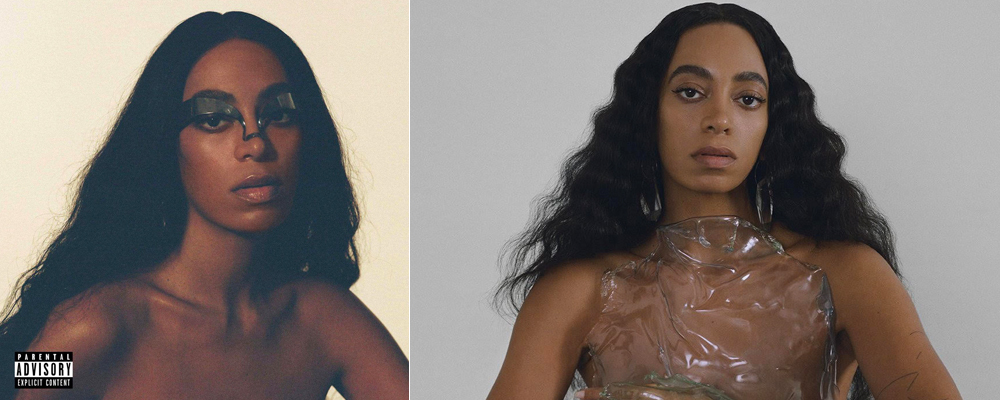Solange Celebrates Her Southern Black Heritage With ‘When I Get Home’
Adi Mehta
Solange is the perfect example of a shared musical heritage and proclivity taking a markedly distinct trajectory. Her sister, the larger-than-life Beyonce, seemed clearly groomed to be a mainstream sensation — glossy, accessible, and quite safely conventional until her self-titled album, on which her staggering success and status suddenly manifested itself in unprecedentedly bold artistic impulses. Solange, on the other hand, has been ever the rebellious younger sibling. Her latest effort, visual album “When I Get Home,” is entirely in character, but bigger and bolder than previous efforts. The album dropped by surprise, but was hinted at through a series of publicity stunts and general provocateur acts. Solange restored the early aughts African American social networking website BlackPlanet.com, and teased an upcoming project with pictures celebrating black culture and identity with the type of unabashed assertiveness that we’ve come to expect from her. The album draws from her Southern roots, especially celebrating her hometown of Houston, constantly flaunting her down home sensibilities in a way that gives the music a special, unique personality. The record is also particularly ambitious and free in a way that very few contemporary R&B-related works even approach.
The album starts with “Things I imagined,” and immediately has a general seventies vibe, with the music recalling bygone times before everything commercial got severely, stylistically diluted and minimized. Solange rounds off her words at the end of her verses, putting on a feisty, brazen and rather alien accent, which at once let’s you know what to expect with this album. There’s abounding confident flair, and the song takes on a grand, twirling arrangement. “Down With the Clique” recalls the likes of Fiona Apple in its eccentric take on soul stylings. There’s a guitar with plenty gusto, a heavenly falsetto, free ad libs with jazz fluidity, and languid drums that give a uniquely appealing laid-back feeling.
On “Way to the Show,” Solange takes a sonic detour with some G Funk flavor, and a Southern hip-hop vibe, recalling the likes of Outkast. Things get seriously funky, with a crisp snare, layered with a gun lock-and-load sound that gives an exhilarating rush. The songs are interspersed with fairly evenly-spaced interludes, a phenomenon that has largely fallen out of fashion in recent years. Segments like “Can I Hold The Mic” delve into Brooklyn Moon-style spoken word indulgence that might be a bit crazy if it weren’t kept so short, neatly packaged in manageable doses. If anything is for sure, it’s that Solange is Afrocentric, feminist, and proud. “Stay Flo” is effortless swag all the way, with vaguely nineties vibes seeming to indicate Destiny’s Child naturally seeping its way in. “Dreams” lives up completely to its title, a consistently dreamy affair that takes on a sepia, retro R&B color, and schieves much of its force by trudging alone ever so slightly slower than you would expect, and glitching up full IDM style at the end.
In case it weren’t already clear how seriously Solange is into being black, she goes on to fill the track “Almeda” with a litany of phrases applauding everything brown and black. She has had public tirades before about such things as curious strangers touching her hair, and such reminders of an underrepresented outsider status are so central to her identity as to define nearly everything she touches. “Time (Is)” features a meandering, video game soul-funk bass line, and builds anticipation until a beat finally drops. Here Solange explores the hocketing vocal techniques popularized by Dirty Projectors, which sounds about right, considering she covered their hit “Stillness Is the Move” years earlier.
Gucci Mane makes an appearance on “My Skin My Logo,” a winsomely playful track. There are D’Angelo vibes to the instrumentation and Erykah Badu ones in the Neo-soul quirk of Solange’s vocal. She really goes left field on this one with, with most of the track consisting of laughing talk in a bizarrely expressive voice, as Gucci keeps up with a running commentary. “Jerrod” plays up the R&B factor, harking back to the early eighties, and showcasing Solange’s free-flowing singing chops over a jazzy harmonic tapestry. “Binz” reveals more Dirty Projectors influence, with stacked vocal harmonies, and playfully avant melodic phrases. “Beltway” veers off into full Disney mode, with Solange singing like some sort of wandering princess with her head in the clouds, over swirling, spiraling electric keyboards.
Songs like “Sound of Rain” are all about the painfully-crafted details. The titular “rain” is envisaged in the most positive sense, with slightly dripping effects. Solange sings with a smoothly gliding voice and her usual bold command, getting more Southern than ever with a refrain of “Swanging on them thangs.” “I’m a Witness” blends out gracefully, making for a solid end to a solid album.
R&B/Soul is very much a bland scene today, estranged from its origins, and reduced to a form largely a shadow of its former self. While minimalism has its obvious appeal, it has sabotaged previously rich musical styles and debased them. Within this environment, Solange’s latest release is a breath of fresh air. It’s quite avant garde in its stylings, but balances out these tendencies with a coolness of manner than couldn’t steer any clearer of pretension. Beyond this, the record shines from the remarkably positive and proud way in which it celebrates African American culture, as well as Southern heritage, in a voice that is unique and resonant.
“When I Get Home” is available March 1 on Apple Music.

